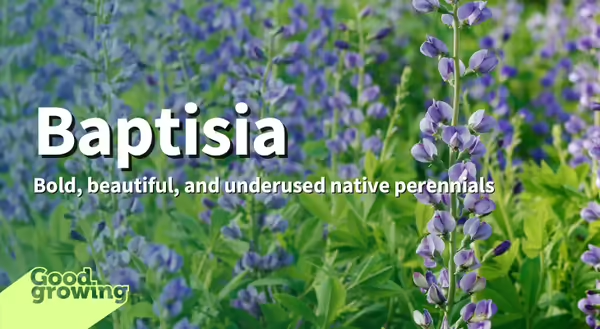
As gardeners, we're often on the lookout for low-maintenance plants with colorful flower displays. One such plant that fits that description, and is vastly underutilized in the landscape, is Baptisia. These easy-to-grow native perennials are primarily grown for their colorful floral displays, ranging from blue, purple, white, and yellow. They can also provide multi-season interest, making them a great addition to the landscape.
Getting to know Baptisia
Commonly known as false indigo, Baptisias are native to the eastern United States. They are members of the legume family (Fabaceae), and there are around 20 species, with at least four species native to Illinois.
Baptisia plants typically grow 3 to 4 feet tall and wide, forming a bushy, shrub-like mound. As the shoots emerge from the ground, they resemble asparagus stems. They have attractive trifoliate leaves (compound leaves with three leaflets) that can range in color from yellow-green to green to blue-green to gray-green and provide a nice contrast with their colorful blooms.
Baptisia will bloom in late spring to early summer (depending on species and cultivar). The flowers are produced on spikes (racemes) that rise above the foliage and can be 12-24 inches tall. Blooms can last for three weeks or longer. Large, mature plants can produce dozens of flower stalks, making for an impressive sight.
After flowering, the plants may produce 2-to-3-inch-long seed pods, which turn black as they mature. Plants will die back to the ground during the winter and can be left standing, providing winter interest, or removed.
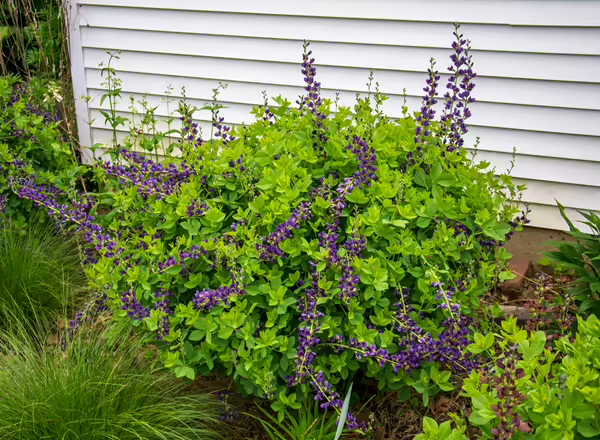
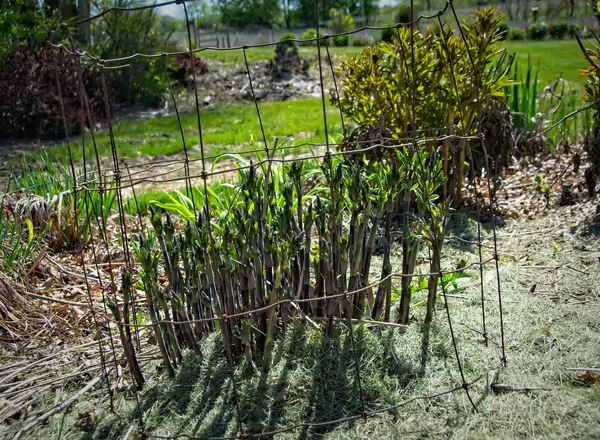
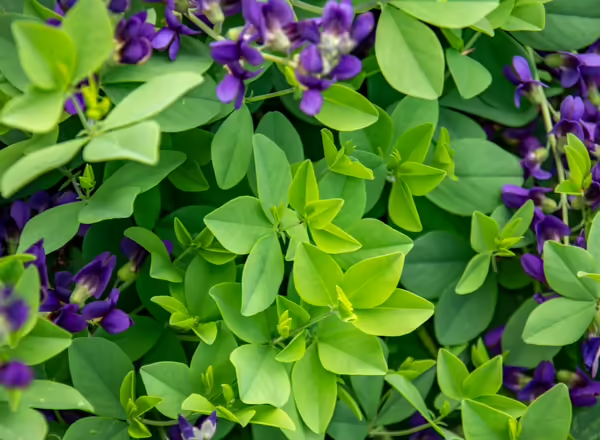
Baptisia as cut flowers
In addition to being a great garden plant, the flowers, pods, and leaves can also be utilized in cut flower arrangements. If using the flowers in a floral arrangement, harvest them when about 1/3 of the flowers on the spike have opened. The flowers can last 7-10 days. One drawback is that the lower, older flowers tend to drop from the raceme.
The foliage of Baptisia can make a great addition to cut flower arrangements, too. In fact, the Association of Specialty Cut Flower Growers named Baptisia x variicolor' Twilite Prairieblues' as the Foliage Cut Flower of the Year in 2021. Harvest the foliage in the morning and place it into water soon after cutting to prevent it from wilting. If harvested when mature, the foliage can last for up to two weeks in arrangements.
The seed pods of Baptisia can also be harvested and utilized in floral arrangements. The mature black pods are often used in dry floral arrangements.
Growing Baptisia in the garden
Baptisia may take a couple of years to reach full size and begin blooming profusely; while they often look scraggly and unimpressive at the garden center, they are well worth the wait. Due to their size and shape, Baptisias make excellent specimen and border plants.
Baptisias prefer well-drained soils. As members of the bean family, they are able to fix their own nitrogen (due to a symbiotic relationship with bacteria), allowing them to tolerate poor soils. They do best in full sun and can tolerate part shade, but blooming may be reduced, and the plant may become leggy.
Once established, plants are drought-tolerant due to their deep, extensive root system. This large root system also makes them difficult to transplant, so choose their location wisely. If plants need to be moved or divided, this should be done in the spring, and plants should be well watered until they become established again.
Baptisias have few pest and disease problems and are deer-resistant. One problem people may encounter is flopping (often due to inadequate sun exposure). If flopping is an issue, peony cages can be placed over plants to help hold them upright.
In addition to their attractiveness as landscape plants, Baptisias also have wildlife value. They are frequently visited by bumble bees, which are able to force open their pea-like flowers. They are also host plants for several species of butterflies like orange sulphur, clouded sulphur, frosted elfin, and eastern tailed blue.
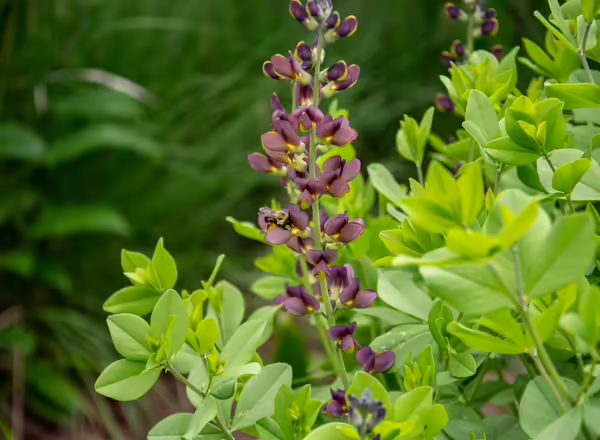
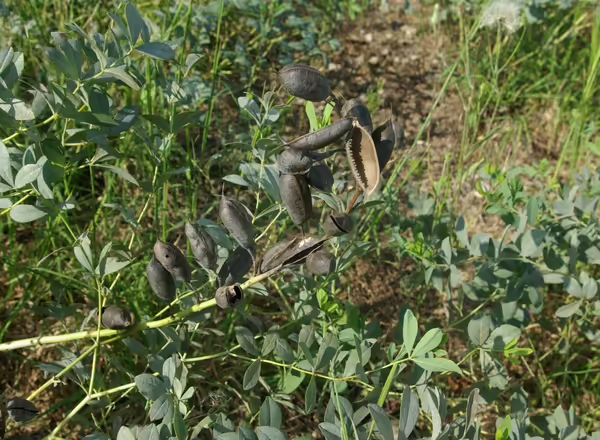
The many types of Baptisia
B. alba, white false indigo, and B. australis, blue false indigo, are the most commonly found species in the horticultural trade. However, extensive breeding has occurred over the years, and many cultivars and hybrids are now available. Several of these have been produced at the Chicago Botanical Garden. In addition to the blue, white, and yellow flowers of the species, a variety of different colors can be found, ranging from violet, purple, maroon, and pink.
From 2012-2015, the Mt. Cuba Center trialed 46 different Baptisia selections. The top performers in their trial were:
- B. sphaerocarpa' Screamin' Yellow'
- B.' Lemon Meringue’
- B. ‘Ivory Towers’
- B. ‘Blue Towers’
- B. ‘Purple Smoke’
- B. ‘Cherries Jubilee’
- B. ‘Sunny Morning’
- B. ‘Blueberry Sundae’
- B. ‘Dutch Chocolate’
- B. ‘Creme de Menthe’.
Good Growing Fact of the Week: The name Baptisia comes from the Greek word bapto, meaning to dip or to dye. Baptisias were used as a substitute for true indigo (Indigofera tinctoria) to create blue dye (which is also how they got their common name, false indigo).
References and for more information
Armitage, A M. 2020. Herbaceous Perennial Plants: A Treatise on Their Identification, Culture, and Garden Attributes. Champaign, Illinois: Stipes Publishing, LLC.
“Baptisia - Mt. Cuba Center.” 2020. Mt. Cuba Center. December 22, 2020. https://mtcubacenter.org/trials/baptisia/.
Photos
Emerging baptisia shoots - F. D. Richards, CC BY-SA 2.0, https://commons.wikimedia.org/w/index.php?curid=107071468
Seed pods - Pam Morgan, Public Domain,"Blue Wid Indigo seed pods"
Want to get notified when new Good Growing posts are available? SIGN ME UP!
Give us feedback! How helpful was this information (click one): Very helpful | Somewhat helpful | Not very helpful
MEET THE AUTHOR
Ken Johnson is a Horticulture Educator with University of Illinois Extension, serving Calhoun, Cass, Greene, Morgan, and Scott counties since 2013. Ken provides horticulture programming with an emphasis on fruit and vegetable production, pest management, and beneficial insects. Through his programming, he aims to increase backyard food production and foster a greater appreciation of insects.